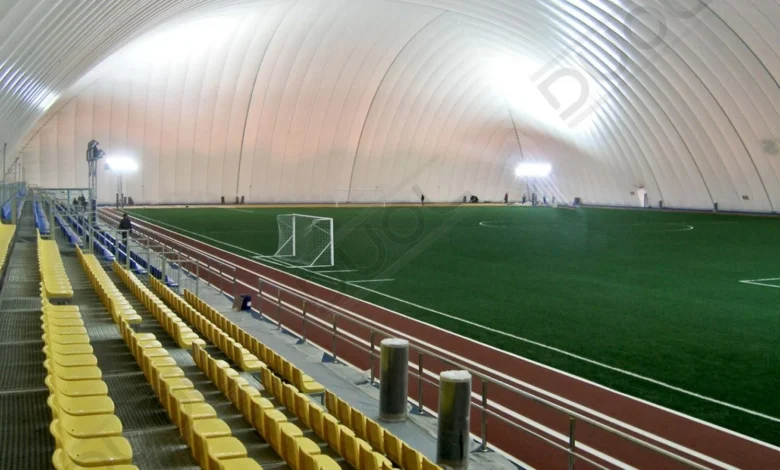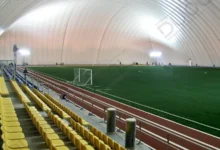Covering the Game: How Air Domes Are Changing Football Infrastructure

As football continues to grow at all levels—from grassroots clubs to professional academies—the demand for all-weather training and playing environments has never been greater. Enter the air dome: a lightweight, pressurised structure offering a versatile solution to the age-old problem of weather disruption.
Increasingly seen across the UK and Europe, air domes provide year-round football access, particularly in regions where rain, snow, and low temperatures can halt outdoor play for weeks or months at a time. Their speed of installation, adaptability, and relatively low maintenance costs make them an attractive option for clubs, schools, and local authorities alike.
This article examines football air dome construction, with particular attention to operational, technical, and environmental factors.
What Defines an Air-Supported Football Structure?
Air domes are lightweight, fabric-covered enclosures that maintain their shape through internal air pressure. This design allows for full-size football or soccer pitches, multi-purpose turf fields, and training areas to operate indoors without structural obstructions. Whether it’s youth development, recreational leagues, or professional training, the ability to maintain a climate-controlled, weatherproof environment is proving to be a game-changer.
Key Elements of Football Dome Construction
1. Site Preparation
Before construction begins, the site must be levelled and prepared to support the dome’s anchoring system. In many cases, a concrete foundation or ground ring is installed to provide stability. Drainage and access routes are also considered at this stage.
2. Dome Membrane and Materials
The outer shell of a football air dome is typically made from a multi-layer PVC or polyethene fabric. These materials are chosen for their tensile strength, UV resistance, fire retardancy, and thermal properties. In cold climates, insulation layers or double-membrane systems are commonly used to improve energy efficiency.
3. Pressurisation and HVAC Systems
To maintain the dome’s structure, a constant internal air pressure is required. This is achieved with a blower or HVAC system, which also regulates temperature and humidity. Backup systems are typically installed to ensure continued operation in case of a power outage.
4. Lighting and Internal Infrastructure
For indoor football, uniform lighting is essential. LED systems are often installed to reduce energy usage and provide consistent illumination. Depending on the facility’s use, additional infrastructure such as changing rooms, equipment storage, or spectator seating may be included as annexes or separate structures.
5. Anchoring and Safety
Domes are anchored using ground beams, steel cables, or ballast systems, depending on the soil conditions and local wind loads. Safety features often include pressure monitoring sensors, automated emergency exits, and redundant air supply systems.
Engineering and Compliance Considerations
Constructing an air dome requires close attention to building codes and engineering standards. Load calculations for wind, snow, and temperature fluctuations must be factored into the design. Permitting varies by jurisdiction but usually involves zoning approval and structural certification by licensed engineers.
Environmental and Operational Aspects
Contemporary football domes seek to strike a balance between sustainability and use. Long-term operating expenses can be decreased with the use of programmable lighting controls, thermal insulation, and efficient HVAC systems. Heat retention and snow-load control become essential elements of operational planning in colder climes.
Conclusion
Whether you’re managing a professional football academy, a local football club, or a municipal sports program, air domes present an effective way to meet rising demand without committing to expensive brick-and-mortar facilities. With quick installation times and lower maintenance costs, they offer a powerful mix of innovation, adaptability, and affordability.
As cities, schools, and clubs plan for the future of sports, air-supported domes are redefining what’s possible in football infrastructure, making the beautiful game playable in every season.





